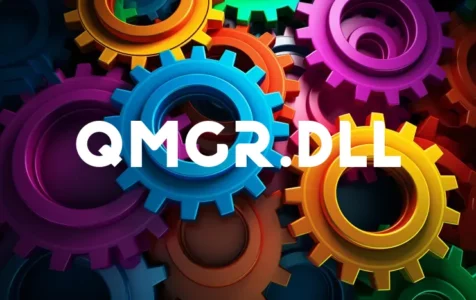Introduction to Qmgr.dll
The term “qmgr.dll” might not mean much to the average computer user, but understanding its role is critical for anyone interested in how Windows manages network transfer tasks. The qmgr.dll stands for “Queue Manager DLL,” an integral part of the Background Intelligent Transfer Service (BITS) in Microsoft Windows Operating Systems. This service is a component that allows programs to create download or upload jobs, which are then processed in the background.
Role and Functionality of Qmgr.dll
BITS is designed to use idle network bandwidth to perform concurrent file transfers between machines. The utility of such a service becomes evident when considering tasks like Windows updates, where files can be downloaded without impeding the user’s network experience. Qmgr.dll is central to this as it helps with queuing and scheduling transfers, ensuring seamless network usage.
Is Qmgr.dll Safe?
Given its key role in system updates, qmgr.dll is generally a safe file to run as part of the Windows operating system. However, like any file on your computer, it is vulnerable to being disguised or infected by malicious software. Therefore, it is essential to ensure that the qmgr.dll file is located in its legitimate System32 folder and not elsewhere.
Common Issues
Users may encounter several issues relating to qmgr.dll, such as error messages stating that the file is missing or corrupted, which can occur due to various reasons, like accidental deletion, malicious software, or an unstable system after an update.
Expert Tip: For smoother PC performance, consider using a PC optimization tool. It handles junk files, incorrect settings, and harmful apps. Make sure it's right for your system, and always check the EULA and Privacy Policy.
Special offer. About Outbyte, uninstall instructions, EULA, Privacy Policy.
Fixing Qmgr.dll Related Errors
If an issue with qmgr.dll arises, users can typically resolve it in a few ways. The most common method would include running a system file check (SFC), which can scan for and restore corrupted system files, including the DLL in question.
To perform a SFC scan:
1. Open the Command Prompt as an administrator.
2. Type `sfc /scannow` and press Enter.
3. Allow the process to complete and follow any prompts to replace any corrupted files.
Another handy tool is the Deployment Image Service and Management Tool (DISM), which can use local or online files to fix issues when SFC can’t.
DISM usage typically looks like:
1. Open Command Prompt as an administrator.
2. To use an online source for repairs, enter the command `DISM /Online /Cleanup-Image /RestoreHealth`.
3. For an offline Windows image, mount the image and then use the command `DISM /Mount-Image /RestoreHealth /Source:C:\repairSource\Windows /LimitAccess`, replacing “C:\repairSource\Windows” with your image’s path.
Sometimes, downloading and replacing the DLL file from a trusted source might be necessary, especially when it’s missing. Yet, users need to be cautious about where they download DLL files from, avoiding potentially dangerous sites that might offer infected files.
User Experiences and Community Discussions
Many community discussions can offer insights into how to fix qmgr.dll issues, with contributions from tech specialists and experienced users. For instance, a visit to a Microsoft community forum reveals that some users have accidentally deleted qmgr.dll and faced problems with the BITS service not starting. Advice from these forums often suggests using DISM with an offline Windows image as a potential fix.
It’s also worthwhile to note that the majority of community members and users might not consider qmgr.dll essential to their everyday computer use, but it becomes critical when system updates or software installations requiring BITS are involved.
Conclusion
Qmgr.dll plays a crucial role in managing asynchronous file transfers in the Windows operating system, especially for updates and system tasks that require network usage. Although generally safe, the DLL can become the source of errors, either being corrupted, misplaced, or replaced by malware. Thankfully, built-in utilities like SFC and DISM, coupled with advice from online community resources, can help restore or replace the necessary files safely, ensuring systems remain up-to-date and functioning correctly.
